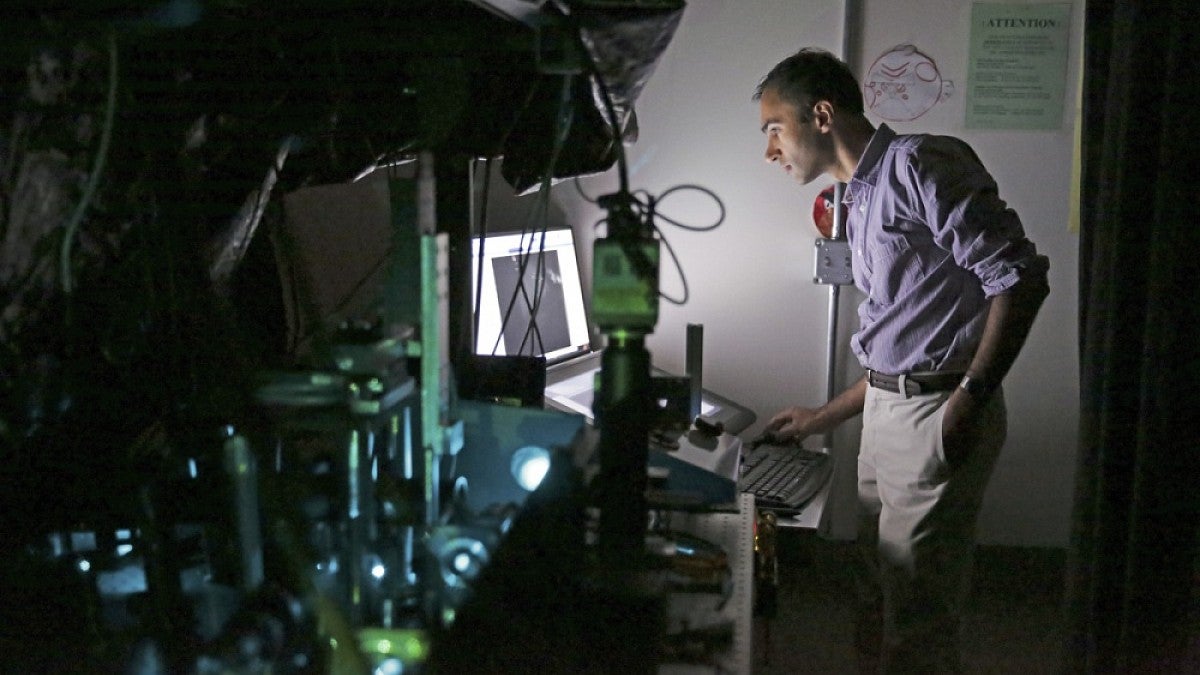UO biophysicist Raghuveer Parthasarathy has been selected as a fellow by the American Physical Society. The selection recognizes those who have made exceptional contributions in physics research, important applications of physics, leadership in or service to physics, or significant contributions to physics education.
Parthasarathy, an Alec and Kay Keith Professor in the Department of Physics, explores the structure and dynamics of biological materials such as cellular membranes and microbial communities in developing animals. In selecting him as a fellow, the American Physical Society cited his creative and innovative contributions to biological physics, especially to the understanding of the gut microbiome and lipid bilayers.
“Each of us is home to a vast community of gut microbes that influence many aspects of health and disease,” Parthasarathy said. “We’re realizing that the physical properties of these communities – how they move, come together, and fall apart – are important to how they function.”
Researchers in Parthasarathy’s lab have been peeking into the gut microbiome, analyzing it from a physical point of view. The team is also focused on the lipid bilayers that form the basis of all cellular membranes, which illustrate how physical character influences what biology is able to do, Parthasarathy said.
Parthasarathy has developed an interest in a variety of biophysics topics since arriving at the UO in 2006, including examining the gut microbial communities using zebrafish. He uses cutting-edge microscopy techniques to explore the ecosystem of microorganisms in the intestine, including light sheet microscopy, which enables the capture of high-resolution, three-dimensional images of living things.
Before coming to the UO, Parthasarathy earned his doctorate from the University of Chicago, where he studied how gold nanoparticles assemble themselves into nanocrystals. He completed a postdoctoral fellowship studying cell membranes at the University of California, Berkeley. At the UO, he has broadened his research to study entire communities of interacting cells.
In the process of discovering which biological systems would lend themselves to new imaging techniques, Parthasarathy began collaborating with UO biologist Karen Guillemin, director of the META Center for Systems Biology. He has continued to work collaboratively with other UO researchers, as well as with graduate students, undergraduates and postdocs in his lab.
He is leading the efforts of a recently announced project spanning physics, neuroscience, molecular biology, ecology and evolution to study aquatic symbioses, the interactions between different animal species living together. Additionally, he serves as an associate in the Phil and Penny Knight Campus for Accelerating Scientific Impact and is actively involved in the Science Literacy Program and the SAIL program.
Parthasarathy is one of 163 fellows for 2020 announced by the society Sept. 28. Each year, the organization recognizes no more than one half of 1 percent of its membership as fellows. He joins numerous other UO faculty members who have received the award.


